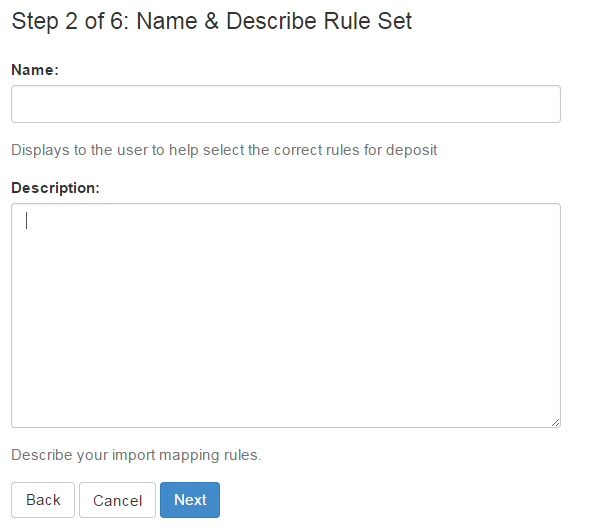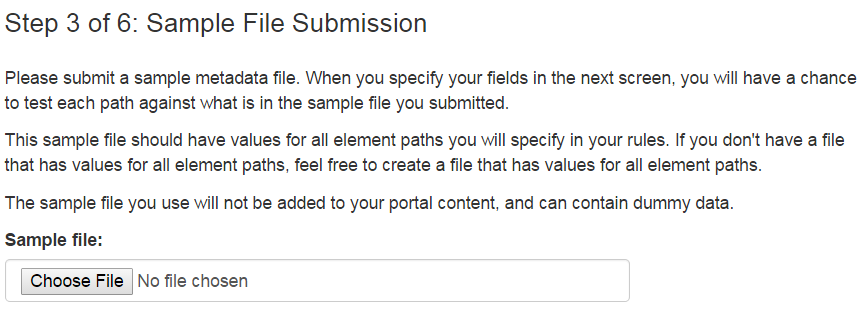Getting started with creating import mapping rules
When creating import mapping rules, please be aware of two things
- Paths are case sensitive:
- You must input the full xpath from the root element for EAD and for many images each with their own XML file. For many images with a single XML file, use the xpath from your record separator:
- See first the page for Creating import mapping rules for images if you are creating rules for digital images
- If you are creating rules for any other type of content, please see the page for Defining import fields
So “Record” will fail your test:

But “record” will pass:

So for the following metadata file that uses “record” as a separator:
<collection>
<record>
<title>Title 1</title>
<record>
<record>
<title>Title 2</title>
<record>
</collection>I would input
record/titleAnd for the following EAD file:
<ead>
<eadheader>
<filedesc>
<titlestmt>
<titleproper>EAD title</titleproper>
</titlestmt>
</filedesc>
</eadheader>
</ead>I would input
ead/eadheader/filedesc/titlestmt/titleproperPlease also note that you should notinclude namespaces in your xpath. So for the following record:</p?
<rdf:RDF>
<dc:title>Image Title</dc:title>
</rdf:RDF>I would input
RDF/titlerdf:RDF/dc:titleImport mapping rules tell Metadata Hopper where to find certain information in your metadata.
Step One: Prepare

The prepare screen details what you will need to have ready to create import mapping rules. This can include having an import mapping rules worksheet filled out as well as having a sample file prepared. When you are ready, click next to continue.
Step Two: Name and Describe

This is the page where you will name and describe your rules. These will be seen by all staff from your institution, so make sure you choose a name that is descriptive of what the rule set is for. It should also include a description that can be used with little to no context. For example, a good example of a name and description for rule set for EAD finding aids might be:
Name: EAD 2002 Finding aids
Description: Finding aids encoded in EAD 2002 using Archivist Toolkit.
Step Three: Submit a sample file

Step three involves uploading a sample file for this rule set that includes all elements you plan to map, with some value for each element. For more information on sample files, see Creating a sample file.
For more information on next steps for creating import mapping rules: